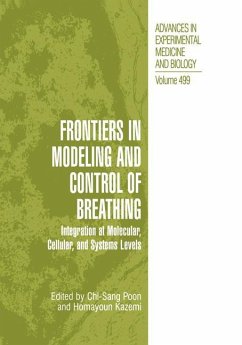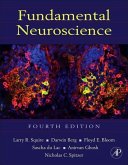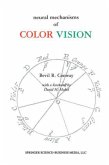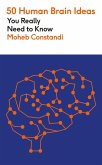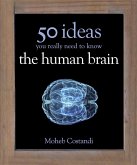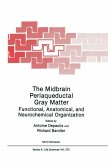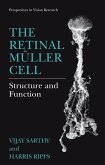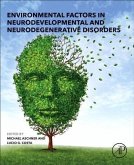Chi-Sang Poon / Homayoun Kazemi (Hgg.)Integration at Molecular, Cellular, and Systems Levels
Frontiers in Modeling and Control of Breathing
Integration at Molecular, Cellular, and Systems Levels
Herausgeber: Kazemi, Homayoun, Chi-Sang Poon
Chi-Sang Poon / Homayoun Kazemi (Hgg.)Integration at Molecular, Cellular, and Systems Levels
Frontiers in Modeling and Control of Breathing
Integration at Molecular, Cellular, and Systems Levels
Herausgeber: Kazemi, Homayoun, Chi-Sang Poon
- Gebundenes Buch
- Merkliste
- Auf die Merkliste
- Bewerten Bewerten
- Teilen
- Produkt teilen
- Produkterinnerung
- Produkterinnerung
The field of neural control of breathing has advanced rapidly in the past two decades, with the emergence of many new and promising research directions of increasing sophistication. The complexity and diversity of the current methodologies signify its remarkable vivacity, albeit at the price of much confusion. Captured in this book are the broad and intricate nature of the field and its multifaceted frontiers, including aspects of genetics, cell and molecular biology, comparative biology, neurophysiology, neurochemistry, neuroanatomy, imaging, human physiology in health and disease, and…mehr
Andere Kunden interessierten sich auch für
![Fundamental Neuroscience Fundamental Neuroscience]() Fundamental Neuroscience115,99 €
Fundamental Neuroscience115,99 €![Neural Mechanisms of Color Vision Neural Mechanisms of Color Vision]() Bevil Richard ConwayNeural Mechanisms of Color Vision168,99 €
Bevil Richard ConwayNeural Mechanisms of Color Vision168,99 €![50 Human Brain Ideas You Really Need to Know 50 Human Brain Ideas You Really Need to Know]() Moheb Costandi50 Human Brain Ideas You Really Need to Know8,99 €
Moheb Costandi50 Human Brain Ideas You Really Need to Know8,99 €![50 Human Brain Ideas You Really Need to Know 50 Human Brain Ideas You Really Need to Know]() Moheb Costandi50 Human Brain Ideas You Really Need to Know21,99 €
Moheb Costandi50 Human Brain Ideas You Really Need to Know21,99 €![The Midbrain Periaqueductal Gray Matter The Midbrain Periaqueductal Gray Matter]() DepaulisThe Midbrain Periaqueductal Gray Matter153,99 €
DepaulisThe Midbrain Periaqueductal Gray Matter153,99 €![The Retinal Müller Cell The Retinal Müller Cell]() Vijay SarthyThe Retinal Müller Cell153,99 €
Vijay SarthyThe Retinal Müller Cell153,99 €![Environmental Factors in Neurodevelopmental and Neurodegenerative Disorders Environmental Factors in Neurodevelopmental and Neurodegenerative Disorders]() Environmental Factors in Neurodevelopmental and Neurodegenerative Disorders112,99 €
Environmental Factors in Neurodevelopmental and Neurodegenerative Disorders112,99 €-
-
-
The field of neural control of breathing has advanced rapidly in the past two decades, with the emergence of many new and promising research directions of increasing sophistication. The complexity and diversity of the current methodologies signify its remarkable vivacity, albeit at the price of much confusion. Captured in this book are the broad and intricate nature of the field and its multifaceted frontiers, including aspects of genetics, cell and molecular biology, comparative biology, neurophysiology, neurochemistry, neuroanatomy, imaging, human physiology in health and disease, and influence of environmental factors. Major topics include chemosensitivity, respiratory sensation, respiratory neurons, rhythmogenesis, plasticity, development, chemoreflex and exercise, respiratory instability and variability with behavioral and sleep states, etc., which are systematically laid out in the book for easy referencing.
Produktdetails
- Produktdetails
- Advances in Experimental Medicine and Biology 499
- Verlag: Springer, Berlin
- 2001
- Seitenzahl: 540
- Erscheinungstermin: 30. November 2001
- Englisch
- Abmessung: 260mm x 183mm x 38mm
- Gewicht: 1319g
- ISBN-13: 9780306466472
- ISBN-10: 0306466473
- Artikelnr.: 23405098
- Herstellerkennzeichnung
- Springer-Verlag GmbH
- Tiergartenstr. 17
- 69121 Heidelberg
- ProductSafety@springernature.com
- Advances in Experimental Medicine and Biology 499
- Verlag: Springer, Berlin
- 2001
- Seitenzahl: 540
- Erscheinungstermin: 30. November 2001
- Englisch
- Abmessung: 260mm x 183mm x 38mm
- Gewicht: 1319g
- ISBN-13: 9780306466472
- ISBN-10: 0306466473
- Artikelnr.: 23405098
- Herstellerkennzeichnung
- Springer-Verlag GmbH
- Tiergartenstr. 17
- 69121 Heidelberg
- ProductSafety@springernature.com
Preface. Acknowledgements. Oxford Conference: The Past, Present and Future.
1. Remembrance of `Oxford' Conferences Past; B.J. Whipp. 2. Workshop on
Modeling in the 21st Century. An Executive Summary; VIII Oxford Conference
Panel on Biomedical Modeling. Central and Peripheral Chemoreceptors. 3.
Central Respiratory Chemosensitivity: Cellular and Network Mechanisms; D.
Ballantyne, P. Scheid. 4. Chemoreception and Tonic Drive in the
Retrotrapezoid Nucleus (RTN) Region of the Awake Rat: Bicuculline and
Muscimol Dialysis in the RTN; E.E. Nattie. 5. Chronic Intermittent Hypoxia
Enhances Carotid Body Chemoreceptor Response to Low Oxygen; Y. Peng, et al.
6. Neurotransmitter Release from the Rabbit Carotid Body: Differential
Effects of Hypoxia on Substance P and Acetylcholine Release; D.-K. Kim, et
al. 7. Muscarinic Receptors Influence Catecholarnine Release from the Cat
Carotid Body during Hypoxia; H.-Y.J. Wang, R.S. Fitzgerald. 8.
Pharmacological and Immunochemical Evidence of the Dopamine D3 Receptor in
the Goat Carotid Body; Z.-Y. Wang, et al. 9. The Excitatory Effect of
Nitric Oxide on Carotid Body Chemoreception is Blocked by Oligomycin; R.
Iturriaga, M. Mosqueira. 10. CO2/HCO3-Modulates K+ and Ca2+ Current in
Glomus Cells of the Carotid Body; J.L. Overholt, et al. +2 additional
chapters 13. Role of Brainstem Respiratory Neuron Types in Phase-Switching
Produced by Afferent Vagal Stimulation; MI. Cohen, et al. 14. Modulation of
the Central Respiratory Effects of 5-HT by Vagal Afferents in Newborn Rat;
J.-Ch. Glérant, et al.15. Activation of Medullary Post-Inspiratory Related
Neurons during Clonidine-Induced Central Apnea in Anesthetized Goats; K.D.
O'Halloran, et al. 16. Respiratory Control of Hypoglossal Motoneurons; J.H.
Peever, J. Duffin. 17. Projections from Brainstern GABAergic Neurons to the
Phrenic Nucleus; G. Song, M. Aoki. 18. Optical Recording of the Neuronal
Activity in the Brainstem-Spinal Cord. Application of a Voltage-Sensitive
Dye; Y. Okada, et al. 19. Interfacing Computer Models with Real Neurons:
Respiratory `Cyberneurons' Created with the Dynamic Clamp; Ch.G. Wilson, et
al. Respiratory Rhythm and Pattern Generation. 20. Is the Vertebrate
Respiratory Central Pattern Generator Conserved? Insights from In-Vitro and
In-Vivo Amphibian Models; M.S. Hedrick, et al. 21. Unstable Breathing
Rhythms and Quasiperiodicity in the Pre-Bötzinger Complex; Ch.A. Del Negro,
et al. 22. Stationary Organotypic Culture of the Pre-Bötzinger Complex from
the Newborn Rat; H. Rigatto, et al. 23. Respiratory Rhythm Generation:
Pre-Bötzinger Neuron Discharge Patterns and Persistent Sodium Current; D.R.
McCrimmon, et al. 24. Roles of the Bötzinger Complex in the Formation of
Respiratory Rhythm; G. Song, et al. 25. Models of Neuronal Bursting
Behavior: Implications for In-Vivo versus In-Vitro Respiratory
Rhythmogenesis; I.A. Rybak, et al. 26. Neurogenesis of the Respiratory
Pattern: Insights from Computational Modeling; I.A. Rybak, et al. 27.
Reconfiguration of the Central Respiratory Network under Normoxic and
Hypoxic Conditions; S.P. Lieske, et al. 28. How Is the R
1. Remembrance of `Oxford' Conferences Past; B.J. Whipp. 2. Workshop on
Modeling in the 21st Century. An Executive Summary; VIII Oxford Conference
Panel on Biomedical Modeling. Central and Peripheral Chemoreceptors. 3.
Central Respiratory Chemosensitivity: Cellular and Network Mechanisms; D.
Ballantyne, P. Scheid. 4. Chemoreception and Tonic Drive in the
Retrotrapezoid Nucleus (RTN) Region of the Awake Rat: Bicuculline and
Muscimol Dialysis in the RTN; E.E. Nattie. 5. Chronic Intermittent Hypoxia
Enhances Carotid Body Chemoreceptor Response to Low Oxygen; Y. Peng, et al.
6. Neurotransmitter Release from the Rabbit Carotid Body: Differential
Effects of Hypoxia on Substance P and Acetylcholine Release; D.-K. Kim, et
al. 7. Muscarinic Receptors Influence Catecholarnine Release from the Cat
Carotid Body during Hypoxia; H.-Y.J. Wang, R.S. Fitzgerald. 8.
Pharmacological and Immunochemical Evidence of the Dopamine D3 Receptor in
the Goat Carotid Body; Z.-Y. Wang, et al. 9. The Excitatory Effect of
Nitric Oxide on Carotid Body Chemoreception is Blocked by Oligomycin; R.
Iturriaga, M. Mosqueira. 10. CO2/HCO3-Modulates K+ and Ca2+ Current in
Glomus Cells of the Carotid Body; J.L. Overholt, et al. +2 additional
chapters 13. Role of Brainstem Respiratory Neuron Types in Phase-Switching
Produced by Afferent Vagal Stimulation; MI. Cohen, et al. 14. Modulation of
the Central Respiratory Effects of 5-HT by Vagal Afferents in Newborn Rat;
J.-Ch. Glérant, et al.15. Activation of Medullary Post-Inspiratory Related
Neurons during Clonidine-Induced Central Apnea in Anesthetized Goats; K.D.
O'Halloran, et al. 16. Respiratory Control of Hypoglossal Motoneurons; J.H.
Peever, J. Duffin. 17. Projections from Brainstern GABAergic Neurons to the
Phrenic Nucleus; G. Song, M. Aoki. 18. Optical Recording of the Neuronal
Activity in the Brainstem-Spinal Cord. Application of a Voltage-Sensitive
Dye; Y. Okada, et al. 19. Interfacing Computer Models with Real Neurons:
Respiratory `Cyberneurons' Created with the Dynamic Clamp; Ch.G. Wilson, et
al. Respiratory Rhythm and Pattern Generation. 20. Is the Vertebrate
Respiratory Central Pattern Generator Conserved? Insights from In-Vitro and
In-Vivo Amphibian Models; M.S. Hedrick, et al. 21. Unstable Breathing
Rhythms and Quasiperiodicity in the Pre-Bötzinger Complex; Ch.A. Del Negro,
et al. 22. Stationary Organotypic Culture of the Pre-Bötzinger Complex from
the Newborn Rat; H. Rigatto, et al. 23. Respiratory Rhythm Generation:
Pre-Bötzinger Neuron Discharge Patterns and Persistent Sodium Current; D.R.
McCrimmon, et al. 24. Roles of the Bötzinger Complex in the Formation of
Respiratory Rhythm; G. Song, et al. 25. Models of Neuronal Bursting
Behavior: Implications for In-Vivo versus In-Vitro Respiratory
Rhythmogenesis; I.A. Rybak, et al. 26. Neurogenesis of the Respiratory
Pattern: Insights from Computational Modeling; I.A. Rybak, et al. 27.
Reconfiguration of the Central Respiratory Network under Normoxic and
Hypoxic Conditions; S.P. Lieske, et al. 28. How Is the R
Preface. Acknowledgements. Oxford Conference: The Past, Present and Future.
1. Remembrance of `Oxford' Conferences Past; B.J. Whipp. 2. Workshop on
Modeling in the 21st Century. An Executive Summary; VIII Oxford Conference
Panel on Biomedical Modeling. Central and Peripheral Chemoreceptors. 3.
Central Respiratory Chemosensitivity: Cellular and Network Mechanisms; D.
Ballantyne, P. Scheid. 4. Chemoreception and Tonic Drive in the
Retrotrapezoid Nucleus (RTN) Region of the Awake Rat: Bicuculline and
Muscimol Dialysis in the RTN; E.E. Nattie. 5. Chronic Intermittent Hypoxia
Enhances Carotid Body Chemoreceptor Response to Low Oxygen; Y. Peng, et al.
6. Neurotransmitter Release from the Rabbit Carotid Body: Differential
Effects of Hypoxia on Substance P and Acetylcholine Release; D.-K. Kim, et
al. 7. Muscarinic Receptors Influence Catecholarnine Release from the Cat
Carotid Body during Hypoxia; H.-Y.J. Wang, R.S. Fitzgerald. 8.
Pharmacological and Immunochemical Evidence of the Dopamine D3 Receptor in
the Goat Carotid Body; Z.-Y. Wang, et al. 9. The Excitatory Effect of
Nitric Oxide on Carotid Body Chemoreception is Blocked by Oligomycin; R.
Iturriaga, M. Mosqueira. 10. CO2/HCO3-Modulates K+ and Ca2+ Current in
Glomus Cells of the Carotid Body; J.L. Overholt, et al. +2 additional
chapters 13. Role of Brainstem Respiratory Neuron Types in Phase-Switching
Produced by Afferent Vagal Stimulation; MI. Cohen, et al. 14. Modulation of
the Central Respiratory Effects of 5-HT by Vagal Afferents in Newborn Rat;
J.-Ch. Glérant, et al.15. Activation of Medullary Post-Inspiratory Related
Neurons during Clonidine-Induced Central Apnea in Anesthetized Goats; K.D.
O'Halloran, et al. 16. Respiratory Control of Hypoglossal Motoneurons; J.H.
Peever, J. Duffin. 17. Projections from Brainstern GABAergic Neurons to the
Phrenic Nucleus; G. Song, M. Aoki. 18. Optical Recording of the Neuronal
Activity in the Brainstem-Spinal Cord. Application of a Voltage-Sensitive
Dye; Y. Okada, et al. 19. Interfacing Computer Models with Real Neurons:
Respiratory `Cyberneurons' Created with the Dynamic Clamp; Ch.G. Wilson, et
al. Respiratory Rhythm and Pattern Generation. 20. Is the Vertebrate
Respiratory Central Pattern Generator Conserved? Insights from In-Vitro and
In-Vivo Amphibian Models; M.S. Hedrick, et al. 21. Unstable Breathing
Rhythms and Quasiperiodicity in the Pre-Bötzinger Complex; Ch.A. Del Negro,
et al. 22. Stationary Organotypic Culture of the Pre-Bötzinger Complex from
the Newborn Rat; H. Rigatto, et al. 23. Respiratory Rhythm Generation:
Pre-Bötzinger Neuron Discharge Patterns and Persistent Sodium Current; D.R.
McCrimmon, et al. 24. Roles of the Bötzinger Complex in the Formation of
Respiratory Rhythm; G. Song, et al. 25. Models of Neuronal Bursting
Behavior: Implications for In-Vivo versus In-Vitro Respiratory
Rhythmogenesis; I.A. Rybak, et al. 26. Neurogenesis of the Respiratory
Pattern: Insights from Computational Modeling; I.A. Rybak, et al. 27.
Reconfiguration of the Central Respiratory Network under Normoxic and
Hypoxic Conditions; S.P. Lieske, et al. 28. How Is the R
1. Remembrance of `Oxford' Conferences Past; B.J. Whipp. 2. Workshop on
Modeling in the 21st Century. An Executive Summary; VIII Oxford Conference
Panel on Biomedical Modeling. Central and Peripheral Chemoreceptors. 3.
Central Respiratory Chemosensitivity: Cellular and Network Mechanisms; D.
Ballantyne, P. Scheid. 4. Chemoreception and Tonic Drive in the
Retrotrapezoid Nucleus (RTN) Region of the Awake Rat: Bicuculline and
Muscimol Dialysis in the RTN; E.E. Nattie. 5. Chronic Intermittent Hypoxia
Enhances Carotid Body Chemoreceptor Response to Low Oxygen; Y. Peng, et al.
6. Neurotransmitter Release from the Rabbit Carotid Body: Differential
Effects of Hypoxia on Substance P and Acetylcholine Release; D.-K. Kim, et
al. 7. Muscarinic Receptors Influence Catecholarnine Release from the Cat
Carotid Body during Hypoxia; H.-Y.J. Wang, R.S. Fitzgerald. 8.
Pharmacological and Immunochemical Evidence of the Dopamine D3 Receptor in
the Goat Carotid Body; Z.-Y. Wang, et al. 9. The Excitatory Effect of
Nitric Oxide on Carotid Body Chemoreception is Blocked by Oligomycin; R.
Iturriaga, M. Mosqueira. 10. CO2/HCO3-Modulates K+ and Ca2+ Current in
Glomus Cells of the Carotid Body; J.L. Overholt, et al. +2 additional
chapters 13. Role of Brainstem Respiratory Neuron Types in Phase-Switching
Produced by Afferent Vagal Stimulation; MI. Cohen, et al. 14. Modulation of
the Central Respiratory Effects of 5-HT by Vagal Afferents in Newborn Rat;
J.-Ch. Glérant, et al.15. Activation of Medullary Post-Inspiratory Related
Neurons during Clonidine-Induced Central Apnea in Anesthetized Goats; K.D.
O'Halloran, et al. 16. Respiratory Control of Hypoglossal Motoneurons; J.H.
Peever, J. Duffin. 17. Projections from Brainstern GABAergic Neurons to the
Phrenic Nucleus; G. Song, M. Aoki. 18. Optical Recording of the Neuronal
Activity in the Brainstem-Spinal Cord. Application of a Voltage-Sensitive
Dye; Y. Okada, et al. 19. Interfacing Computer Models with Real Neurons:
Respiratory `Cyberneurons' Created with the Dynamic Clamp; Ch.G. Wilson, et
al. Respiratory Rhythm and Pattern Generation. 20. Is the Vertebrate
Respiratory Central Pattern Generator Conserved? Insights from In-Vitro and
In-Vivo Amphibian Models; M.S. Hedrick, et al. 21. Unstable Breathing
Rhythms and Quasiperiodicity in the Pre-Bötzinger Complex; Ch.A. Del Negro,
et al. 22. Stationary Organotypic Culture of the Pre-Bötzinger Complex from
the Newborn Rat; H. Rigatto, et al. 23. Respiratory Rhythm Generation:
Pre-Bötzinger Neuron Discharge Patterns and Persistent Sodium Current; D.R.
McCrimmon, et al. 24. Roles of the Bötzinger Complex in the Formation of
Respiratory Rhythm; G. Song, et al. 25. Models of Neuronal Bursting
Behavior: Implications for In-Vivo versus In-Vitro Respiratory
Rhythmogenesis; I.A. Rybak, et al. 26. Neurogenesis of the Respiratory
Pattern: Insights from Computational Modeling; I.A. Rybak, et al. 27.
Reconfiguration of the Central Respiratory Network under Normoxic and
Hypoxic Conditions; S.P. Lieske, et al. 28. How Is the R

